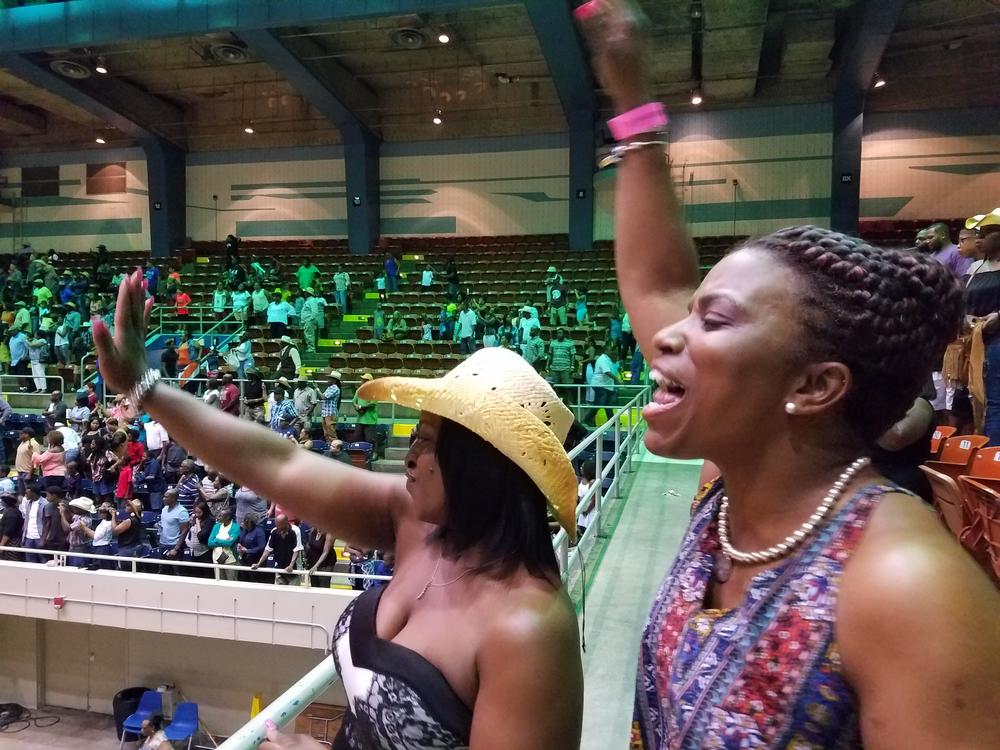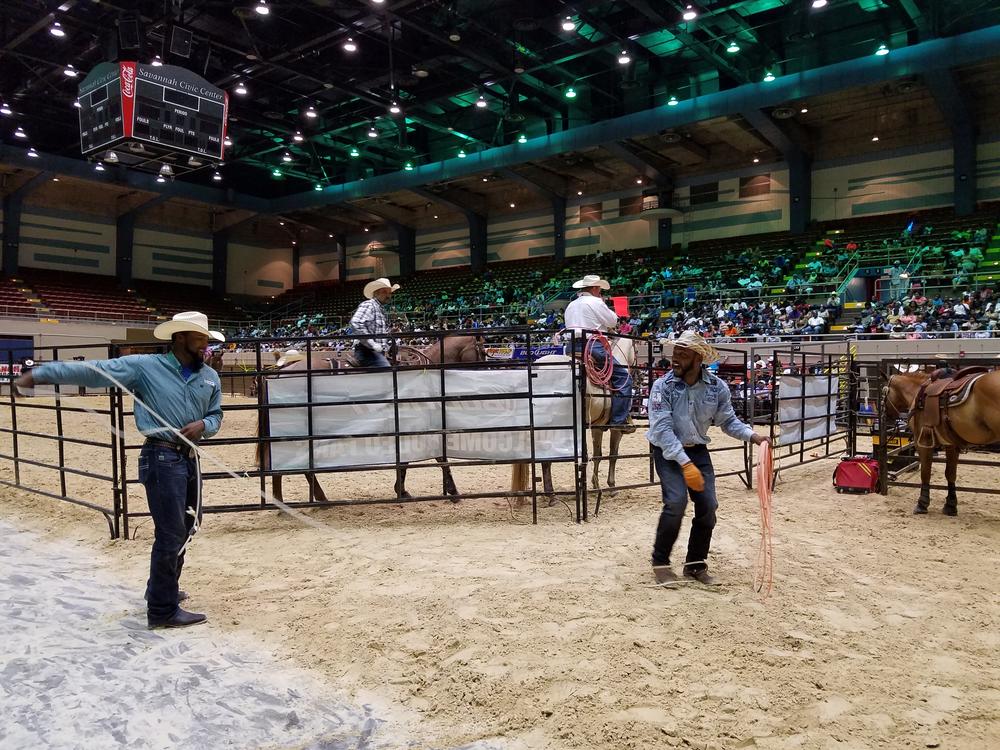Section Branding
Header Content
Black Rodeos Aim To Attract, Educate Audiences Of Color
Primary Content
You might not guess it from old Westerns, but many of the bull riders and cattle ropers of the world are people of color. African-Americans, Latinos, and Native Americans played a key role in the settlement of the American West and the development of rodeo.
Today, special rodeos in Georgia and around the country highlight that history – and aim to bring new fans of color into the sport.Black rodeos seek to attract audiences of color to a sport that's often mostly white.
On their first trip to the rodeo, Ramona Famble and her friends Toi Denson and Reeshemah Johnson didn’t quite know the rules yet. They had to figure it out as they watched, but they enjoyed the show.
“Not knowing what to expect, and then you saw the first guy go out, and he like tackles this bull, and he like jumps on him and he rolls around in the dirt?” Famble said, “You know, I’m like, ‘Wow!'”
They enjoyed the view, too, laughing as Johnson cheered and catcalled the cowboys.
These women didn’t know about black rodeos until one came to Savannah, where they live. That’s fairly common. Keith Roberts founded the Atlanta Black Rodeo Association in 1991. He wanted to spread the word about cowboys of color.
“A lot of the African-American community doesn’t know about black cowboys,” Roberts said. “And so that was one way to educate them and entertain them at the same time. And if you go to regular rodeo? You don’t see a lot of blacks at regular rodeo. So we gave them a venue where they could come out and feel comfortable.”
That question of comfort is a big reason why black rodeos – as well as Latino and Native American rodeos – are still around today, more than half a century after integration ended baseball’s Negro leagues.
Tracey Owens Patton from the University of Wyoming wrote a book about ethnicity in rodeo. She says the professional rodeo itself was never officially segregated. But separate rodeos cropped up as Jim Crow laws kept riders of color out of venues. “Rodeo has been slow, I would argue, in just feeling like a welcoming place to some of the rodeo participants,” Patton said.
Keith Roberts said he never faced overt exclusion when he was a rider. But he said it’s still tough to draw new fans of color to rodeo.
“If you’re from Atlanta and you’re going out to a small town, you don’t feel comfortable,” he said. “It’s not that you’re excluded, it’s just that you don’t feel comfortable.”
Creating a rodeo where those fans do feel welcome can pay off big time. Roberts said his rodeos bring in between two thousand and five thousand people, depending on the arena. And once they’re sold on the sport, many come back over and over.
The black rodeo in Savannah certainly converted a few new fans - like Reeshemah Johnson.
“This is my first time. Such an awesome event,” she said after the show. “Definitely, definitely worth it.”




